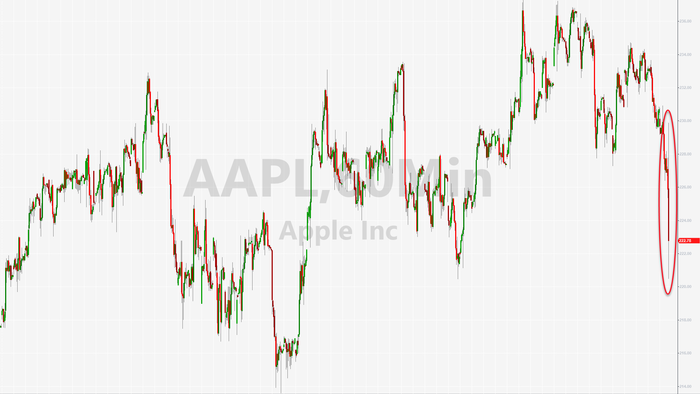Apple Inc. recently reported its fiscal Q4 earnings for the quarter ended September 30, and the results have raised concerns among investors, particularly regarding future growth expectations. In after-hours trading, Apple shares slid to session lows following the announcement of lukewarm guidance for Q1, predicting revenue growth in the low to mid-single digits year-over-year, which equates to approximately 4-6%. This falls short of the sell-side consensus estimate of 7%, highlighting a potential slowdown in growth given that Apple had reported a 6% sales rise in the previous quarter. The sentiment is particularly disappointing for those who had anticipated a new iPhone supercycle, driven by the recent excitement surrounding artificial intelligence (AI).
Despite buoyant AI rhetoric during the summer’s WWDC event, Apple’s iPhone sales appear flat, with UBS analyst David Vogt noting unit sell-through stagnation around 46 million for the September quarter. In his forecast, he had projected revenues largely in line with expectations, which was reinforced by a balanced sentiment concerning future iPhone demand. His observations suggested that while there is some enthusiasm regarding the iPhone 16 launch, the sales performance amidst widespread AI integration remains muted. The overall market conditions appear mixed, with flows indicating more long-only demand for Apple, but signs of caution among investors persist, as the anticipated supercycle growth seems less probable.
Apple’s fiscal Q4 results were somewhat of a mixed bag, with adjusted earnings per share at $1.64, surpassing prior expectations of $1.58, and total revenues reaching $94.93 billion—a 6.1% increase from the previous year, also above estimates. Notably, products revenue grew to $69.96 billion, led by iPhone sales at $46.22 billion, reflecting a 5.5% increase and setting a record for this fiscal quarter. However, not all segments performed well; iPad revenue fell short of estimates, and wearables, home, and accessories revenue declined by 3%, further fueling concerns about diminishing excitement in Apple’s product offerings, particularly in wearables.
Regional performance also unveiled troubling trends for Apple, especially from Greater China, where revenues dropped 0.3% year-over-year, falling short of the $15.8 billion estimate. This marked the fifth consecutive quarter of declining sales in this crucial market. In contrast, other regions like Europe and the Americas experienced modest growth, indicating a troubling divergence in performance. The disappointing sales in China can be attributed to increasing nationalism and a growing consumer preference for local products, which may be encroaching on Apple’s market share. The need for innovative product design is underscored by the fact that local competitors are launching new technologies, while Apple has only introduced minimally differentiated devices.
While Apple’s overall installed base of devices achieved a record high globally, the lack of growth in iPhone sales in China raises questions about the performance of one of its key markets. Additionally, service revenue growth, although at an all-time record of $24.97 billion (up 12%), still fell short of expectations. The push for government regulations that may require Apple to open its App Store may further complicate prospects for future service revenue growth. Digital services represent a critical area of expansion for tech companies, and Apple’s faltering position could hinder its ability to capitalize on these opportunities.
Despite these challenges, CFO Luca Maestri noted that the company achieved nearly $27 billion in operating cash flow during the quarter and returned over $29 billion to shareholders, demonstrating strong financial health in certain aspects. Nonetheless, the company’s aggressive stock buyback program has raised varying sentiments among shareholders, who are increasingly wary of Apple’s long-term growth trajectory amidst declining sales and stagnant innovation. The value of inventories grew by approximately $900 million compared to previous years, signaling efforts to manage supply without direct production, a vital reminder of Apple’s reliance on its suppliers.
In conclusion, while Apple continues to remain a strong player with key sales beats and a robust cash generation model, mixed earnings results and regional performance issues, particularly in China, raise significant eyebrows. The company’s apparent struggle to maintain innovative momentum and respond to competition, especially in consumer electronics, poses a challenge as it attempts to leverage emerging technologies like AI. Analysts now point to a critical need for Apple to rejuvenate its product portfolio with fresh innovations to regain market interest and secure its position in an increasingly competitive landscape. The forthcoming periods will be crucial for Apple, as investors will closely monitor its strategy to re-engage consumers and revive growth momentum in a landscape that is rapidly evolving.

